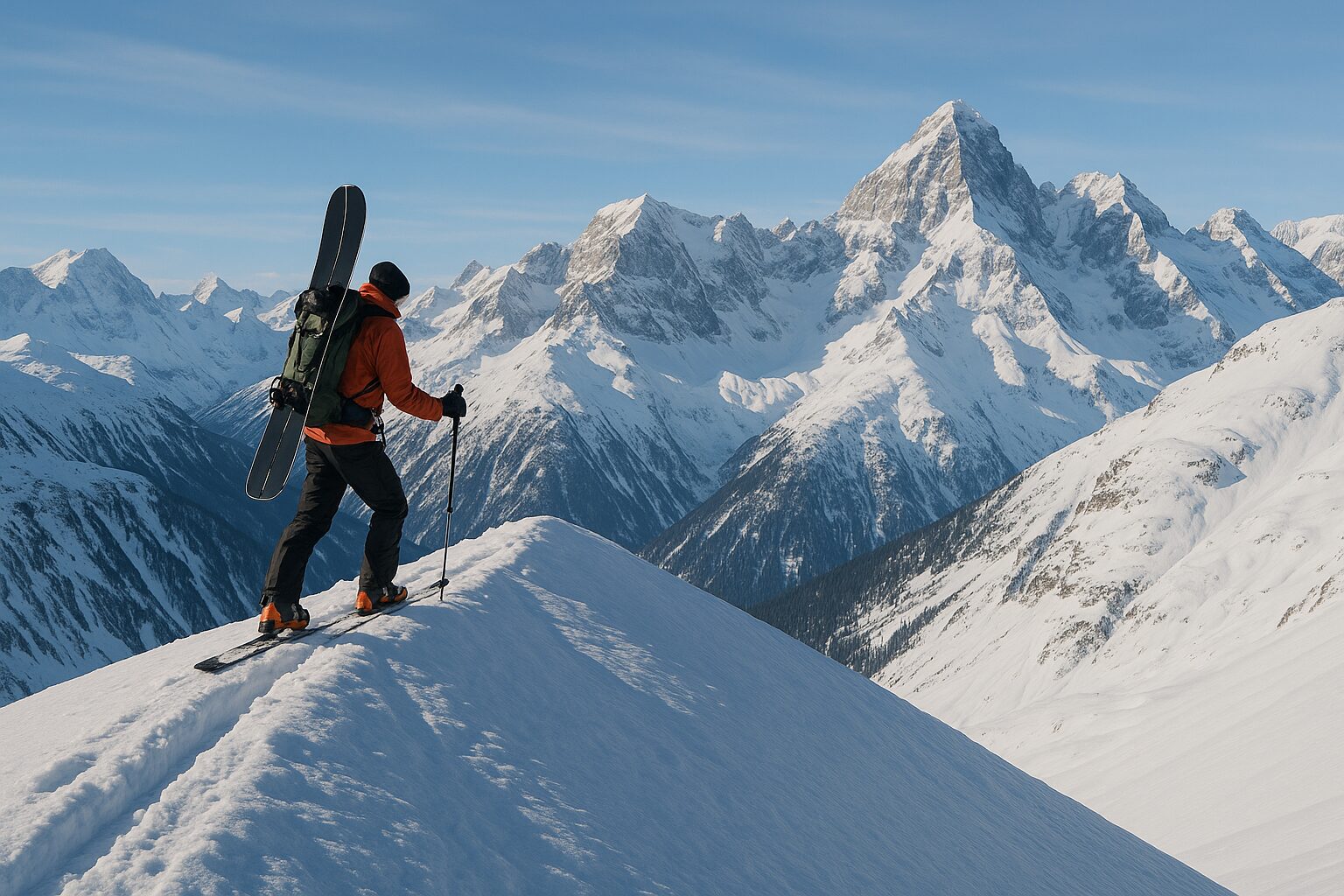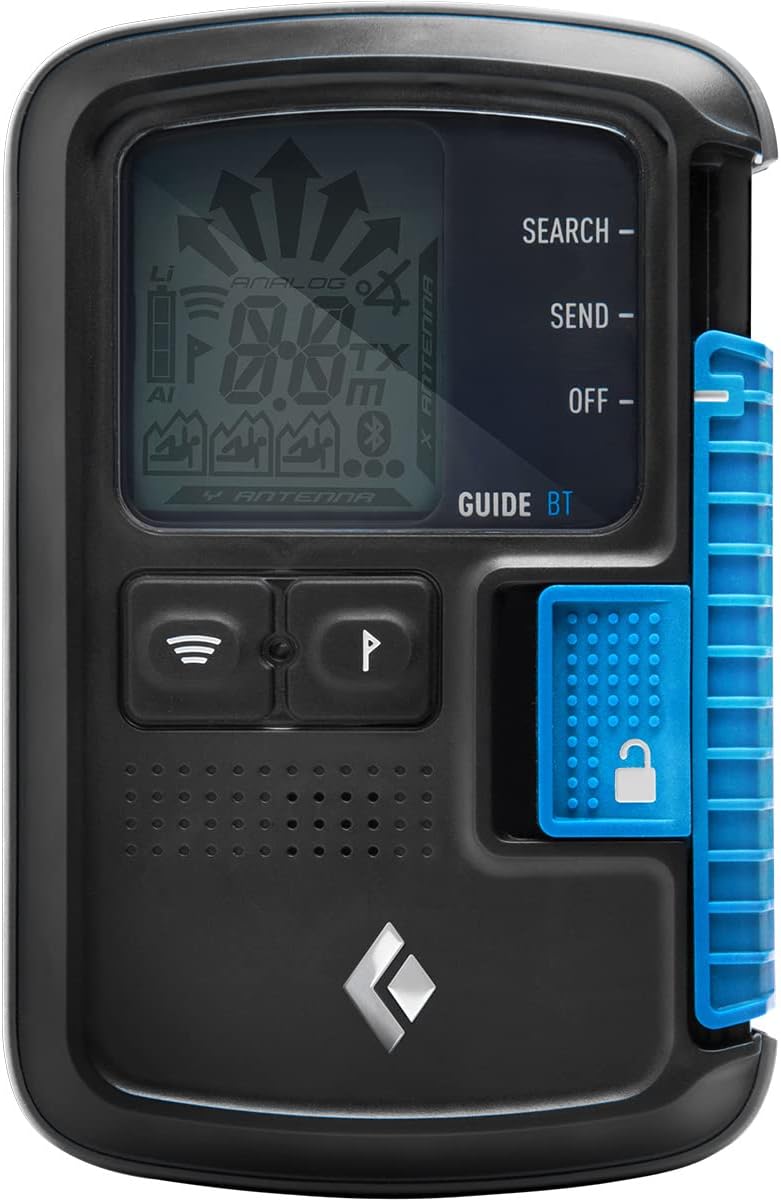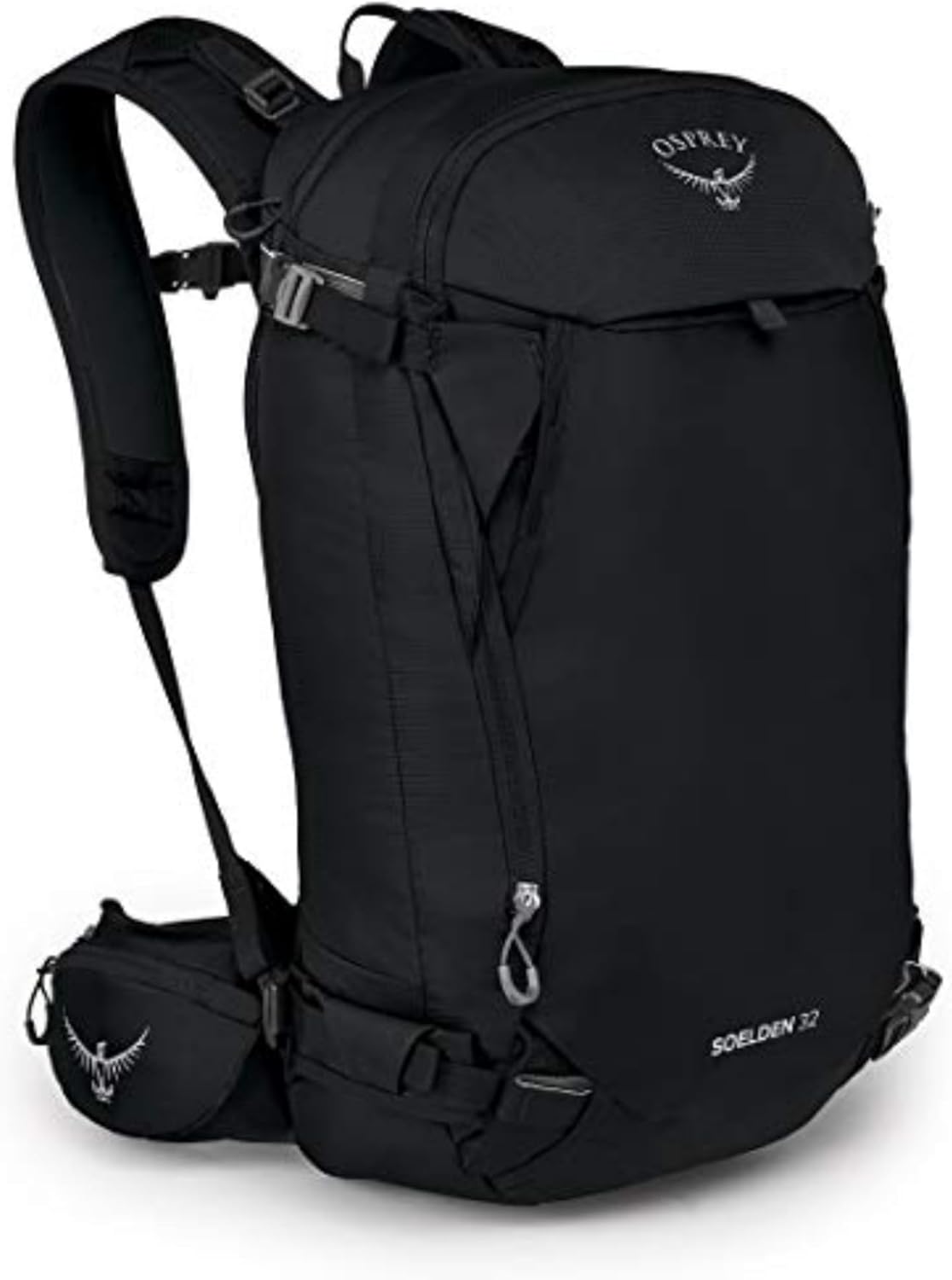Untracked & Unbound: The Essential Guide to Backcountry Snowboarding

I remember the moment the allure of the backcountry truly took hold. I was standing at the top of a crowded resort run, looking out at a pristine, untouched bowl just beyond the ropes. The silence of that distant peak was a stark contrast to the chairlift buzz behind me. It represented freedom, challenge, and the ultimate powder turns. But I also felt a deep, primal sense of respect and fear. I knew that crossing that boundary wasn’t just a step into deeper snow; it was a step into a world where I was solely responsible for my own safety.
This guide is born from years of taking that step—and from the rigorous education, close calls, and incredible rewards that came with it. Backcountry snowboarding is not an extension of resort riding. It is an entirely different sport that uses snowboarding as its reward. It demands knowledge, fitness, humility, and the right gear. This is not a guide to your first backcountry tour. This is the guide to everything you must do before you even consider it. Let’s talk about how to earn your turns, and more importantly, how to come home to ride another day.
A NON-NEGOTIABLE WARNING
The backcountry is an uncontrolled, unpatrolled environment containing extreme hazards, including avalanches. People die in avalanches every year. This guide is for informational purposes only and is not a substitute for professional avalanche safety training. DO NOT enter the backcountry without the proper gear, knowledge, and partners. Your life depends on it.
THE REALITY CHECK: IS THE BACKCOUNTRY REALLY FOR YOU?
The images are intoxicating: perfect spines in Alaska, bottomless powder in Japan, serene ridgelines at sunset. But behind every one of those photos is a huge amount of unseen effort and expertise. Before you invest a dollar in gear, you need to honestly assess if you’re ready for the commitment.
1. Your Riding Ability: Expert In-Bounds First
You must be a highly proficient in-bounds snowboarder. This is the absolute minimum requirement. You need to be able to comfortably and confidently ride any black diamond run at a resort, in any snow condition—ice, heavy powder, crud, moguls. Why? Because in the backcountry, there are no grooming machines. You will encounter every type of snow imaginable, often on a single run, and you can’t have your snowboard skills be the weakest link when you also have to worry about avalanche danger and navigation.
If you’re still working on your carving or exploring your first blue runs, that’s fantastic! The resort is an amazing playground. Focus on mastering it. Our guide to the best snowboarding resorts for beginners can help you find the perfect place to hone your skills.
2. Your Fitness Level: It’s a Grind
The “earn your turns” mantra is no joke. The uphill is 90% of the effort. You need a strong cardiovascular base. Can you hike or run for several hours at a time? Backcountry tours often involve thousands of feet of vertical ascent while carrying a 20-30lb pack, often at high altitude. Start a training regimen of hiking, trail running, or cycling long before the snow flies.
3. The Investment: Time and Money
Backcountry snowboarding is not a cheap hobby. The essential safety gear alone will cost several hundred dollars, and a full splitboard setup can easily run over $1,500. More important than money is the time investment. A proper avalanche course is a multi-day commitment. You’ll spend hours planning tours, checking weather and avalanche forecasts, and practicing rescue skills. It is a lifestyle, not a casual weekend activity.
THE HOLY TRINITY: YOUR NON-NEGOTIABLE SAFETY GEAR
If you and every single person in your group do not have these three items and know how to use them, you should not be in the backcountry. End of story. This is your personal protective equipment (PPE) for avalanche terrain.

1. Avalanche Transceiver (Beacon)
This is an electronic device worn on your body that constantly transmits a radio signal. If you are buried in an avalanche, your partners switch their beacons to “search” mode to receive your signal and pinpoint your location. This is your lifeline. The Mammut Barryvox is a legend in the industry, known for its intuitive interface, huge range, and reliable signal processing, making it a top choice for both beginners and professionals.
Check Barryvox on Amazon
2. Avalanche Shovel
Finding a buried partner with a beacon is only half the battle. You have to dig them out, and avalanche debris sets up like concrete. A plastic shovel will break. You need a collapsible metal shovel. The Black Diamond Evac is a workhorse, featuring a durable aluminum blade, a telescoping shaft for leverage, and a “hoe mode” to efficiently move large amounts of snow. A toy shovel is not an option.
Check BD Evac on Amazon
3. Avalanche Probe
Once your beacon gets you close, you use this collapsible pole to physically probe the snow and find the exact location of your buried partner before you start digging. Time is critical, and a probe saves vital seconds and energy. The BCA Stealth 270 is a popular choice for its fast deployment and sturdy construction. You cannot dig effectively without a probe strike.
Check BCA Stealth on AmazonSave Money with a Package
Many manufacturers, like Backcountry Access (BCA), offer packages that include a beacon, shovel, and probe. This is often the most economical way to get your essential safety kit and ensures all your gear is modern and compatible. It’s a great starting point for anyone serious about getting into the backcountry.
THE COMPLETE KIT: GEARING UP FOR THE UPHILL & DOWNhill
Beyond the Holy Trinity, you’ll need specialized gear to travel through the mountains efficiently and ride safely.
The Uphill Machine: Splitboard, Bindings & Skins
A splitboard is a snowboard that splits in half to form two “skis,” allowing you to travel uphill. For the ascent, you attach removable skins to the bottom of each ski; their plush fabric grips the snow, preventing you from sliding backward. At the top, you remove the skins, reassemble the board, and you’re ready to ride down.
- Choosing a Splitboard: Look for a versatile, all-mountain shape for your first board. The Jones Solution is a perennial favorite and an industry benchmark for a reason—it’s reliable, performs well in all conditions, and is built to last.
- Splitboard Bindings: These are different from resort bindings. They are designed to pivot at the toe for efficient walking on the uphill and lock in solidly for the downhill. Spark R&D is the undisputed leader in this category.
- Skins: Make sure they are cut to fit your board’s shape. A mix of mohair (for glide) and nylon (for grip and durability) is ideal for most conditions.
Your Lifeline Pack: The Backcountry Backpack
You need a dedicated backcountry backpack (around 30-40 liters) with specific features:
- Dedicated Avalanche Tool Pocket: This allows instant access to your shovel and probe. You should not have to dig through your lunch and extra layers to get to your rescue gear.
- Board Carry System: An A-frame or vertical carry system is essential for “bootpacking” up steep sections where skinning isn’t possible.
- Airbag Compatibility: Many modern packs are compatible with avalanche airbag systems. These are expensive but are a proven technology that can help keep you on the surface of an avalanche, significantly increasing your chances of survival. The BCA Float series is a reliable and widely used airbag system.
Once you’ve got your gear, you need a way to get it to the trailhead. Check out our guide on the best snowboard bags for options that can handle a splitboard and all your extra equipment.

Jones Solution Splitboard
Often hailed as the ultimate all-terrain splitboard. The Solution is designed to handle any condition you’ll encounter out of bounds. Its directional freeride shape, Traction Tech edges for icy skin tracks, and durable construction make it a trusted partner for serious adventures. This is a board that will grow with you as your skills advance.
Check Jones Solution on Amazon
Osprey Soelden 32 Backpack
Osprey brings its legendary pack-building expertise to the snow. The Soelden 32 has everything you need: a dedicated and easy-to-access avy tool pocket, multiple board carry options, a helmet carry, and a supremely comfortable fit for long days on the skin track. It’s a thoughtfully designed pack built for safety and efficiency.
Check Osprey Soelden on AmazonEssential Accessories
Your resort kit needs some backcountry-specific upgrades.
- Boots: While you can use your resort boots, backcountry-specific boots with a “walk mode” dramatically improve comfort and efficiency on the uphill. Find options in our best snowboard boots guide.
- Helmet & Goggles: You’ll be sweating on the way up, so ventilation is critical. A lightweight, well-ventilated helmet and goggles with anti-fog technology are essential. See our guides for the best snowboard helmets and best snowboard goggles.
- Navigation: A GPS device or a phone with a mapping app like CalTopo or Gaia GPS is standard. Always carry a paper map and compass as a backup and know how to use them.
- Communication: Cell service is non-existent in most backcountry areas. A satellite messenger like a Garmin inReach allows you to send and receive texts and trigger an SOS in an emergency.
THE MOST IMPORTANT GEAR: KNOWLEDGE & TRAINING
You can own every piece of gear on this list, but without the knowledge to use it, it’s just dead weight in your pack. Your brain is your best tool.
Step 1: Take an AIARE 1 Course
This is not optional. AIARE (American Institute for Avalanche Research and Education) provides the standard for avalanche education in the U.S. An AIARE 1 is a 3-day course that combines classroom learning with field-based training. You will learn:
- How to understand avalanche forecasts and recognize avalanche terrain.
- The basics of snow science and how a stable snowpack forms (or doesn’t).
- How to plan a tour and make smart decisions as a group.
- How to perform a companion rescue. You will practice using your beacon, shovel, and probe in realistic scenarios until it becomes second nature.
Find a certified course provider in your area and sign up. Do it before you buy any other gear.
Step 2: Learn to Read the Forecast
Every day before you go out, you must check your local avalanche center’s forecast (e.g., the Colorado Avalanche Information Center for snowboarding in Colorado). You’ll learn to interpret the danger rating, understand the identified avalanche problems, and use that information to choose appropriate terrain for the day.
Finding Partners
Your AIARE course is the best place to find aspiring backcountry partners who are starting with the same foundational knowledge. You can also find mentorship through local chapters of the American Alpine Club or online groups, but always be cautious. Go out with new partners on very conservative terrain first to assess their skills and decision-making before committing to a major objective.
Backcountry FAQ: Common Questions
These terms refer to backcountry terrain that is accessed from a resort lift. While it’s easier to access, it is still the backcountry. It is not patrolled or controlled for avalanches. The same rules apply: you need the gear, training, and a partner. Some of the best snowboarding destinations, like Jackson Hole or many of the top European ski resorts, are famous for their lift-accessed backcountry.
You can, but it’s inefficient. You would need to carry the board on your back while you hike up in snowshoes. This is much more tiring and slower than using a splitboard. For very short hikes (“bootpacks”), it’s feasible, but for any real tour, a splitboard is the standard tool for the job.
An airbag system consists of a large, durable balloon packed into the backpack, connected to a trigger on the shoulder strap. If you are caught in an avalanche, you pull the trigger, and a canister of compressed air or a powerful fan inflates the balloon. Through a process called “inverse segregation,” the larger volume of the inflated bag helps you rise to the surface of the moving snow debris. It does not protect you from trauma from hitting rocks or trees, but it is a proven life-saving tool.
A LIFELONG JOURNEY
Entering the backcountry is the beginning of a lifelong learning process. Every day in the mountains is a lesson. Start slow, choose conservative objectives, and never be afraid to turn back. The mountain will always be there tomorrow. The reward of standing on a silent peak, looking down at a line you earned with your own two feet, is one of the purest experiences in the world.
Do the work, get the education, respect the mountains, and you’ll unlock a lifetime of adventure.





















